The one area I've been trying to get my students more active in is in math. Again, I'm not too tied to worksheets or the textbook in math. My interactive math journals are just that - students INTERACTING with and reflecting on the material - not simply gluing a work sheet into a composition book and completing it with colored pencils (which I have seen way too much of lately ... but that's a post for another day). We do collaborative problem-solving like my Stick-It Responses and group and paired work with Building Better Responses, and work with manipulatives all the time, but all of these still have my students sitting through the activity. And that's just not good enough. I want them moving. I want them fully immersed in the concepts - mind AND bodies.
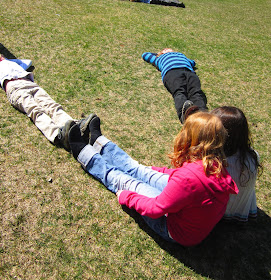 |
| Students modelling an acute angle |
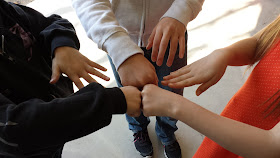 |
| Students modelling 3/6 (or 1/2) of the hands in fists |
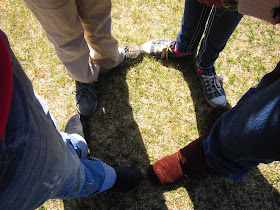 |
| Students modelling an octagon with their feet. |
I can't wait to bring these math circles into the classroom in September - starting with Place Value. I'm going to continue to add sets through the year as we do the activities - I think they will be a perfect Friday activity for review. You can click on the links below if you wish to see some of the math circles I have already finished:
- Geometry Math Circle
- Fractions Math Circle
- Fractions, Decimals, and Percents Math Circle
- Place Value Math Circle - Whole Numbers
- Place Value Math Circle - Decimals
- Math Facts Math Circle
- Rounding Math Circle
- Factors and Multiples Math Circle
- Numbers Math Circle for Physical Activity
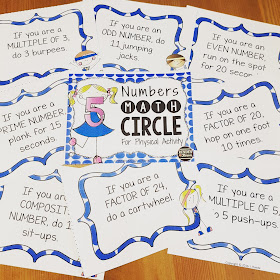 My newest Math Circle is one I've done for years as a warm-up before gym class, or as quick brain breaks in the classroom - Numbers Math Circle for Physical Activity. It follows a slightly different format, as for this one, the teacher has all the cards. Number off your students starting at one (I just tell my students their number, but I have also included number cards in the resource in case you think your students may need that physical reminder) and then start reading off the cards. For example, "If you are a prime number, do 10 jumping jacks". All students whose numbers are prime will stand up and complete 10 jumping jacks. It's a great way to integrate a little math review into your phys ed classes, or a little physical activity into your math classes ... and my students LOVE it! There are 40 different instruction cards included in the resource, but you can pick and choose any number to complete.
My newest Math Circle is one I've done for years as a warm-up before gym class, or as quick brain breaks in the classroom - Numbers Math Circle for Physical Activity. It follows a slightly different format, as for this one, the teacher has all the cards. Number off your students starting at one (I just tell my students their number, but I have also included number cards in the resource in case you think your students may need that physical reminder) and then start reading off the cards. For example, "If you are a prime number, do 10 jumping jacks". All students whose numbers are prime will stand up and complete 10 jumping jacks. It's a great way to integrate a little math review into your phys ed classes, or a little physical activity into your math classes ... and my students LOVE it! There are 40 different instruction cards included in the resource, but you can pick and choose any number to complete.If there are any other circles you would like to see, please leave a comment below. I'm currently working on a few more, but I could always use some great ideas. Also, if you have another way to get your students up and moving in math class, I'd LOVE for you to share your ideas below.
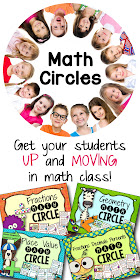
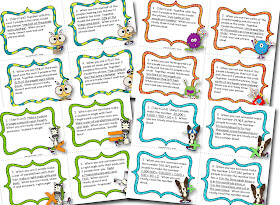
Would absolutely love these geared more towards third grade standards-brilliant!
ReplyDeleteI also would love these aligned to the third grade standards. My kids would love doing these circle activities. I am going to pass this along to some 4th grade pals.
ReplyDeleteLove this idea!! Quick question: How many kids are in a circle? Whole class? Small groups with kids having multiple cards?
ReplyDeleteWe are all about anything that gets the kids moving. Scoot is extremely popular with our kiddos. We also play Brain Bounce, which is like a quiz bowl type game. I love how you have the kids get their bodies involved with this though. Great for those kinesthetic learners!
ReplyDeleteWe are all about anything that gets the kids moving. Scoot is extremely popular with our kiddos. We also play Brain Bounce, which is like a quiz bowl type game. I love how you have the kids get their bodies involved with this though. Great for those kinesthetic learners!
ReplyDeleteAre these (Math Circles) available in a bundle yet? I would love to get them as a bundle if possible on your TPT.
ReplyDelete